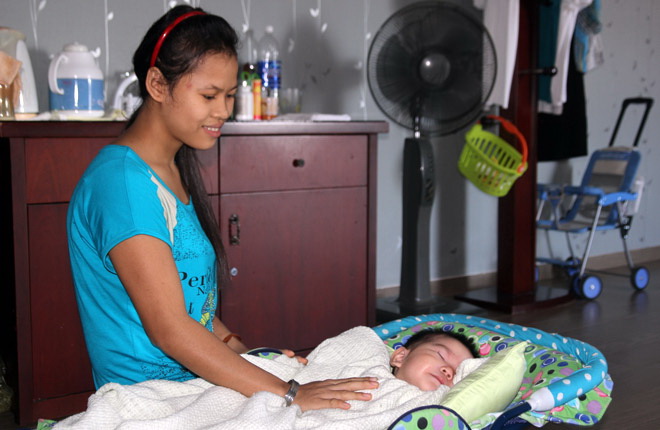Fresh college graduates earn almost 20 percent less than domestic workers in Vietnam, according to data released this week by a Hanoi-based research center and international nonprofit OXFAM.
A fresh graduate is paid VND2.7 million (US$129) a month on average whereas a domestic worker commands a typical monthly salary of VND3.2 million ($152), Ngo Thi Ngoc Anh, director of the Center for Gender, Family, and Community Development Research, said, citing a nationwide survey carried out from 2007 to 2013.
Anh added that most domestic workers in Vietnam are women (98.7 percent) and the majority of them are 38 to 55 years old. Approximately 50 percent come from poor or extremely poor families in rural areas, she said.
The survey conducted with help from OXFAM said that 90 percent of domestic workers did not have a written contract with homeowners. They suffered from many hardships in return for such a good salary in the Vietnamese context, it added.
Over 60 percent worked for more than eight hours a day while more than 20 percent were frequently scolded, with another 2.4 percent being physically attacked, the survey said.
As many as 16 percent were subject to sexual assault by their masters, it pointed out.
The findings showed that most domestic workers only finished middle school, with 22 to 31.8 percent either illiterate or merely having completed elementary school.
The survey also revealed that 98.4 percent of domestic workers have not been formally trained and 21.7 found it hard to land a job.
Many organizations and centers are providing training to domestic workers for labor export rather than meeting local demand.
So Anh, the research center’s director, suggested that the Ministry of Labor, War Invalids, and Social Affairs (MOLISA) should develop a training program in consultation with Brazil and South Africa, countries that consider domestic work an occupation, to help supply skills to local domestic workers.
The number of domestic workers in Vietnam will rise to 246,000 in the next three to five years, according to MOLISA forecasts.























































